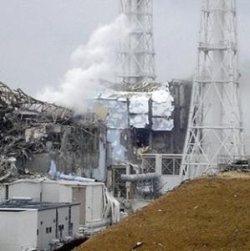Besides the immediate health effects that the Japanese nuclear disaster may have on people within close proximity of the plant, there are concerns as to how the radiation could spread beyond the borders of Japan. While much of the worries have been assuaged by experts, there is one that is being watched closely: the food supply in Japan.
Hong Kong has suspended all imported food from five prefectures in Japan (prefectures in Japan are governed jurisdictions that are larger than cities, towns, and villages.).
India has ordered radiation tests at its ports and airports of all Japanese food originating after March 11 when the earthquake occurred.
So, how does all this play into the food imported to the U.S.? First off, less than four percent of all food imported into the U.S. comes from Japan. Even so, that is enough to concern anyone if that food is contaminated with radiation.
As a precaution, an official from the U.S. Food and Drug Administration has said that all products containing milk, fresh vegetables and fruit from one of four prefectures closest to the Fukushima Daiichi nuclear power plant will be not be allowed to enter the United States. The rest of the food will be diverted to be tested.
Japanese officials have said that tested milk has been found to have radiation levels 20 percent higher than the acceptable level. Some has even been found to be 17 times that!
Officials have gone on record as saying that in order to get to dangerous levels in your body that people would have to eat a year’s worth of spinach. There is a whole lot of hysteria going on right now, and to an extent it’s understandable since it’s such a frightening development. But when you see comments from readers saying that we have been mislead about the dangers of using microwave ovens, some of the fears tend to be boiling over.
Be as cautious as you need to feel comfortable, but gather as much information from nuclear experts and develop an informed opinion.
The Bigger Fear: Food Prices
Before the crisis in Japan, wholesale food prices rose nearly four percent in February. This was the largest rise over a month’s time in over 35 years. It’s uncertain as to how the disaster in Japan will come into play, but the country will be relying more heavily on food imports for the time being. That, from a country that already imports more than half its food.

